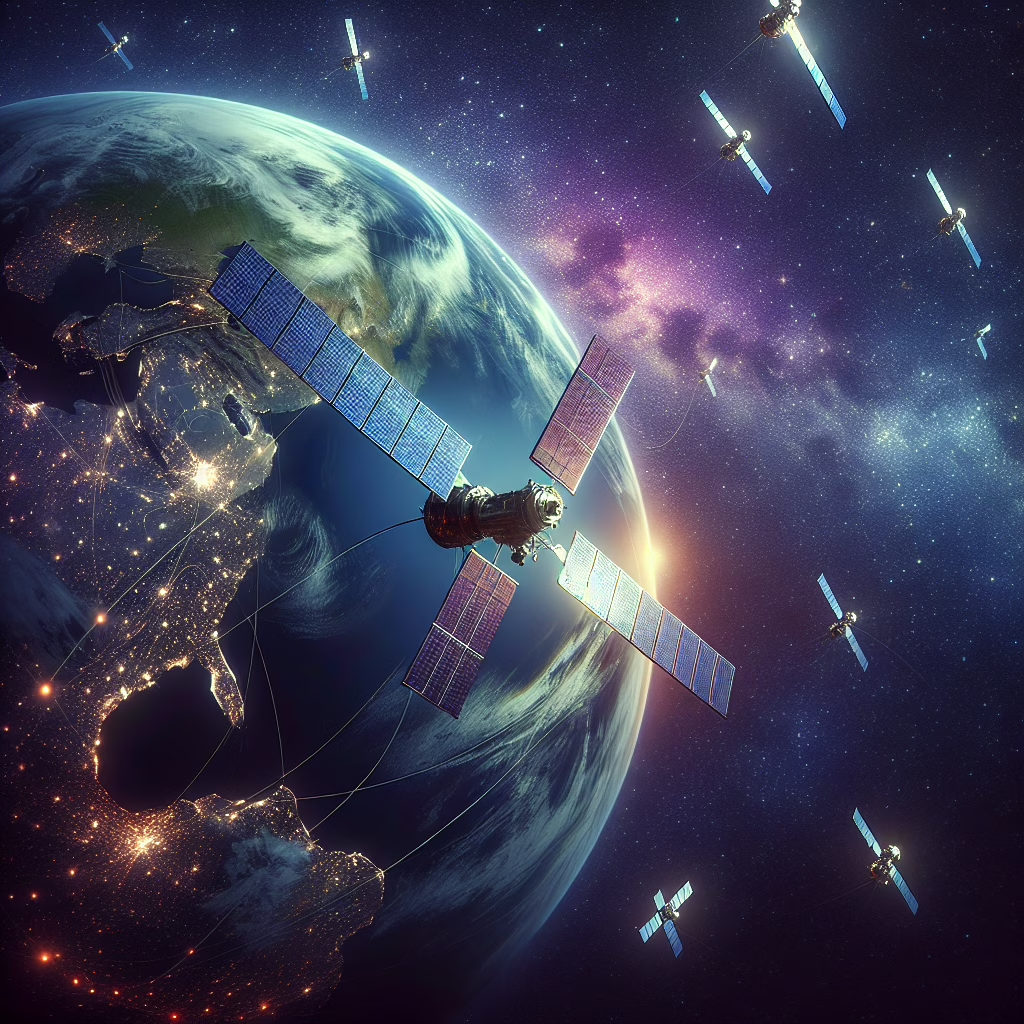When it comes to providing internet access from the stars, two giants are squaring off: Starlink and Amazon satellites. This cosmic competition is more than just a battle for bandwidth; it’s a race for connectivity supremacy that could change how we access the web forever. Buckle up, because this is going to be a wild ride through the stratosphere!
The Starlink Symphony: A Satellite Soiree
Let’s start with Starlink, the brainchild of Elon Musk and his team at SpaceX. Imagine a constellation of satellites dancing across the night sky, beaming internet to our homes, schools, and even those pesky remote cabins where Wi-Fi signals fear to tread. Starlink aims to blanket the Earth with high-speed internet by deploying thousands of satellites into low Earth orbit (LEO). As of now, they’ve launched over 3,500 satellites, and they’re just getting warmed up!
But what’s the big deal about LEO? Well, unlike traditional satellites that float in higher orbits and can make your connection feel like it’s swimming through molasses, LEO satellites promise lower latency. That means fewer frustrating moments when you’re trying to stream cat videos or engage in a heated online debate about pineapple on pizza.
Amazon’s Galactic Game Plan: Project Kuiper
Now, let’s turn our gaze toward Amazon satellites, which are looking to join this high-flying party with Project Kuiper. This initiative aims to launch a constellation of over 3,200 satellites to provide broadband connectivity worldwide. That’s right! Jeff Bezos isn’t just busy with package deliveries; he’s also launching his own fleet into space to ensure that everyone can binge-watch their favorite shows without buffering.
While Starlink has been making headlines with its rapid deployment, Amazon has been playing it cool. They’ve been quietly preparing their satellite launch strategy while securing partnerships with companies like United Launch Alliance (ULA) for rocket launches. It’s like watching a chess match where one player is already in checkmate while the other is still setting up their pieces.
The Battle for Bandwidth: Who Will Win?
So, who will emerge victorious in this epic struggle for cosmic connectivity? Both Starlink and Amazon satellites have unique selling points. Starlink has already gained traction with users around the globe, offering services in areas where traditional ISPs fear to tread. Meanwhile, Amazon’s deep pockets could mean faster development and deployment—if they ever get around to launching those rockets.
Interestingly enough, both companies are vying not just for customers but also for regulatory approval from the FCC and other international bodies. It’s as if they’re fighting not just for the stars but also for the bureaucratic blessings that will allow them to operate without a hitch.
The Future of Connectivity: A Sky Full of Possibilities
As we look ahead into the future of connectivity, one thing is clear: we’re on the brink of an internet revolution powered by space technology. With both Starlink and Amazon satellites racing towards the finish line, users stand to benefit from increased access and potentially lower prices as competition heats up.
This interstellar showdown raises important questions about how these networks will impact our daily lives. Will we see faster connections? More reliable service? Or perhaps an entirely new way of interacting with technology? Only time will tell.
The Cosmic Conclusion
If there’s anything we can take away from this space saga, it’s that competition drives innovation. Whether you find yourself rooting for Musk or Bezos—or simply hoping for better internet speeds—one thing is certain: the stars are aligning for a future full of possibilities!
We’d love to hear your thoughts on this cosmic competition! Are you Team Starlink or Team Amazon satellites? Share your opinions in the comments below!
A special thanks to The Verge for inspiring this article!
Related Articles
- Bitcoin ETFs Pull $590M on BlackRock’s Second-Largest Day of Inflow
- White House calls Amazon ‘hostile’ after report says it will label tariff price hikes
- Microsoft could offer a guided tour of the Copilot app to help Windows 11 newbies

